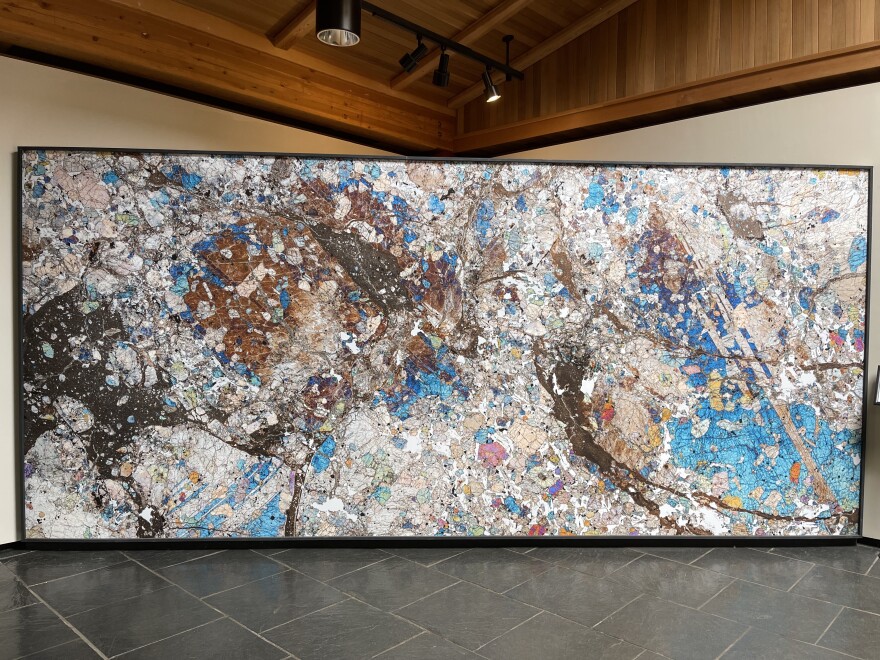This is Sandy Brown Jensen, and you’re listening to Viz City, KLCC’s arts review program. When the heat started to come on last week, we were kayaking for a few days up on Paulina Lake. We took a day trip to visit the High Desert Museum on Highway 97 between Bend and La Pine.
As we came in the door, we were met with an enormous, twenty foot panel of truly immense abstract cosmic proportions. I thought I was looking at North Africa and the Red and Indian Oceans from the International Space Station, with richly detailed landforms in shades of iron to rose and the oceans in vivid, iridescent blue.

As I wandered deeper into the spacious entrance hall, I loved a panel in black with crystalline space objects tumbling through it in gold, magenta, and cut diamond. Another satellite image featured five black lakes sprawled across a textured background with crystal space objects tumbling down toward the water.

These really big photographs were so compelling to fall into with my imagination that I almost forgot to check out the artist. Boy, was I surprised! The prints in this exhibition are micro-panoramic photographs of thin sections of rock samples through a polarizing microscope. These tiny slices of super thin rock are no bigger than postage stamps. Yet these microscopic landscapes contain so much familiar detail, which is why they are called “microscapes.”
To add to the coolness factor, a lot of these are samples from rare meteorites, like one from Mars.

“Cosmic Microscapes” is a wonderful mind-blower as I think about the similarities between our macro and micro worlds.
This exhibit is a collaboration between Seattle photographer Neil Buckland and University of Washington meteorite scientist Dr. Tony Irving. It will be at the High Desert Museum until July 18. I’m so glad I saw it, and I hope you do, too!
This is Sandy Brown Jensen for KLCC.





